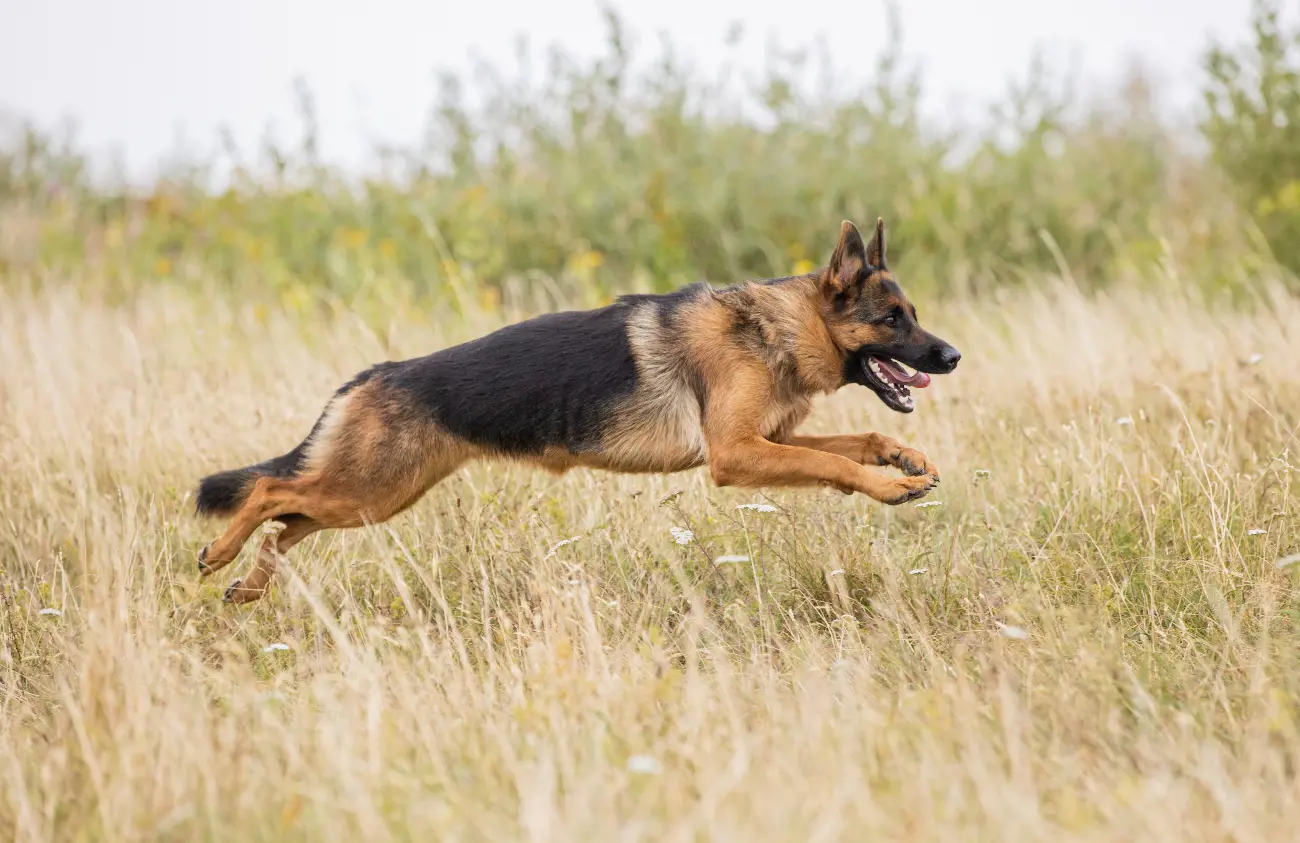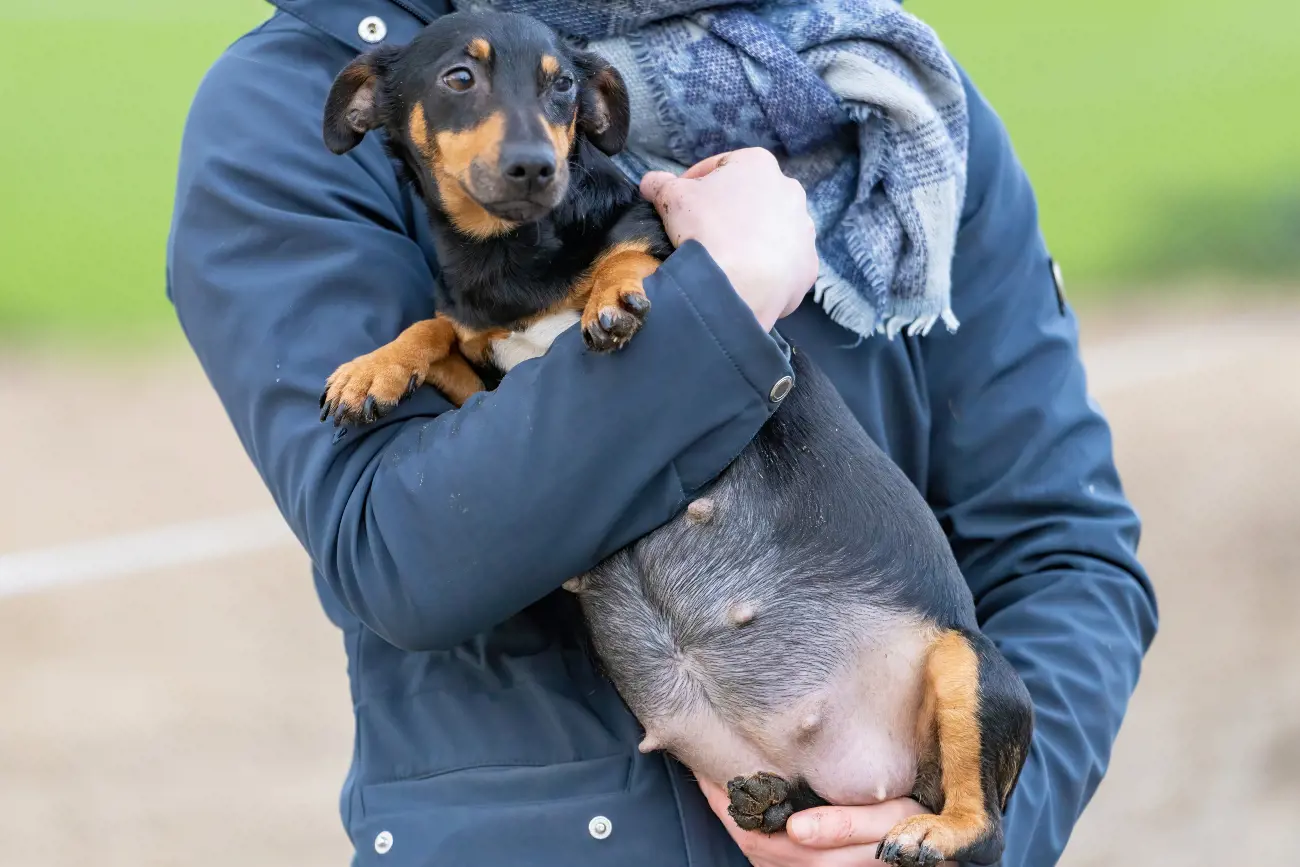How to choose the best collar and lead for your dog
24th September, 2020

Walking into your local pet store to browse for a collar and lead can be a fun but also truly bewildering experience. With so many different materials, colours, sizes and designs there could be hundreds to choose from. If only everything was as straightforward and easy as arranging insurance for your dog!
To stop yourself from making some common mistakes read on for our guide on how to choose the best collar and lead for your dog.
What materials are collars and leads made from?
As mentioned already, collars and leads are available in a whole range of materials to suit many different requirements.
The most common are cotton web, nylon, leather and metal chain. To choose which is going to be the best for your dog you need to consider in what way you’re going to be using the lead and collar.
Cotton web
While this material will show wear and isn’t the strongest, it is lightweight and inexpensive so often used for training puppies.
Nylon
Strong, versatile and very hard-wearing, nylon collars and leads are very popular and can come in single- or double-ply thickness. As with any material a larger, stronger dog will need a thicker, wider collar to stand the strain.
Leather
The original and still perhaps the best material, leather is both strong, durable, attractive and now comes in many different colours to suit any look.
While more expensive than other materials, leather is very long lasting and even improves with age.
However, be aware that sometimes collars sold as leather are actually made of bonded leather.
This is a mixture of bonded leather scraps and is nowhere near as durable. Rolled leather collars are recommended for dogs who have thick hair that easily mats around their collar.
Metal chain
Collars and leads made out of this strong material have fallen in popularity owing to concerns that improper use can cause severe injuries to dogs.
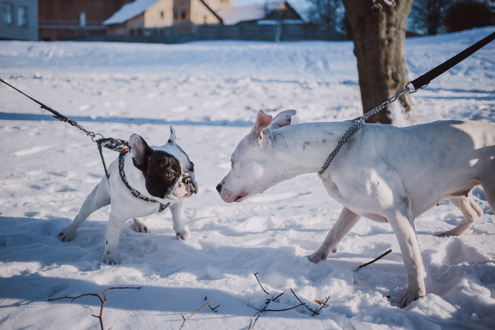
Types of fastenings
Whether swivel snaps, buckles, D-rings or O-rings the fastening style often comes down to personal preference, but there are some things worth considering.
Plastic fastenings are easier to put on and take off, but these can deteriorate with exposure to sun and other elements.
Solid brass or nickel-plated buckles are stronger and generally more secure. Durability is an important consideration for dogs who are prone to chewing their collars or larger, stronger dogs who pull more.
Swivel snaps help reduce tangling while D-rings in front allow fastenings to hang freely under the animal’s neck. An O-ring at the back of the collar allows for quick attachment and release.
Types of collar
Every different dog size, temperament and training need has been catered for in the range of collars on the market.
Most owners and their dogs will be well-served by a traditional collar in nylon or leather but there are other collars suitable for other situations.
Apart from when training it’s recommended that traditional collars are best for daily use.
Traditional collars
While traditional collars come in a whole host of shapes and sizes all should sit high on your pet’s neck rather than hanging down near their shoulder blades.
These collars are easy to put on and remove and can be as simple or as fancy as you want.
For smaller dogs such as Dachshunds or Pugs, a smaller or lightweight choice of collar is best. Wider and more durable collars would be more suited to stronger dogs like a Mastiff or Rottweiler.
For a dog that pulls a lot or can’t be let off the lead, then other collars might be more suitable.
Be sure to include an identification tag on the collar with your current contact details. You never know when your pet might be hurt or in need and someone wants to get hold of you urgently.
Having dog insurance from Purely Pets is vital to protect your dog. However, you need to be easily contactable so important decisions concerning your dog’s welfare can be made quickly.
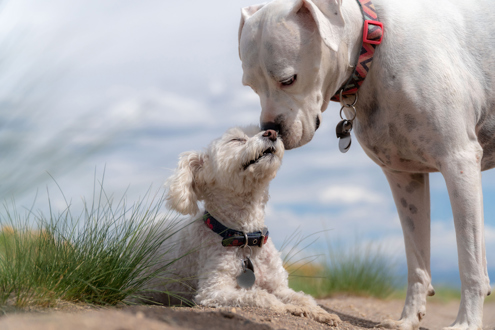
Slip/choke collars
Whether made from rope or chain, slip collars have fallen out of favour with dog owners and trainers as they can be damaging to your dog if not used properly.
A slip or choke collar is a continuous loop that slips through itself to form a collar at one end. When the dog pulls it gets choked by the loop or chain around its neck.
No matter how much we love our dogs, sometimes accidents can happen. If you think damage has been caused to your dog by a slip collar then contact your vet immediately.
Having dog insurance in place means that you can seek medical attention without the worry of expensive vet bills.
Martingale collars
A safer and more comfortable option is the Martingale collar. It’s essentially a half nylon and half chain collar which prevents you from damaging the dog’s oesophagus if they pull.
Originally designed for training greyhounds and whippets, recently the Martingale has become more popular among dog owners of all types.
To prevent long-haired breeds from getting fur trapped, Martingale collars are also available in a completely fabric design.
Sizing your dog’s collar
Before choosing a collar, you need to find out the size of your dog’s neck. Wrap a measuring tape around their neck between the ears and collar bone.
Adding two inches to the measurement will give you the most appropriate collar size.
When fitting the collar on your dog you should be able to slip two fingers underneath, between your dog's neck and the collar.
The collar needs to be tight enough that it won't slip over your dog's head, but loose enough that your dog won’t be choked by it when you’re out on a walk. Secure your dog's safety with a good collar and dog insurance!
Harnesses
As an alternative to a collar, dogs who have problems with their respiratory system, throat or trachea can be provided with a harness.
The harness goes around the chest and shoulders behind the front legs rather than around the neck. This relieves pressure on the dog’s throat and trachea if it pulls on the leash when out walking or training.
Your vet can give you more details of these and other devices, or if you have dog insurance with Purely Pets, you can phone our 24-Hour Vet Helpline for advice.
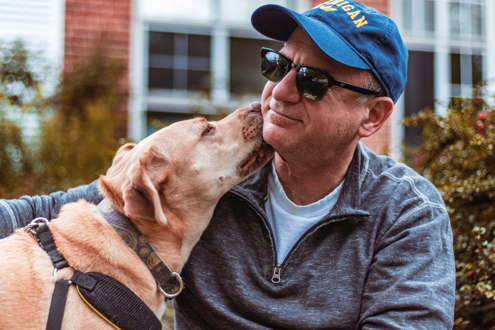
Types of lead
After a collar, the most essential piece of kit for your dog is the lead. A lead is perfect for training a dog to walk and behave appropriately and also stops them from getting into danger while you’re out and about.
As with collars, there are many different types to choose from. Most owners will probably only need two depending on the dog’s breed and what you’re using the lead for.
Standard lead
This is the most common type for basic training and everyday use and they’re available in many different colours, materials, widths and lengths.
Most breeds of dog are suited to a 6-foot length but the weight and width of the lead should match your dog’s size. A Chihuahua would find a Great Dane’s lead far too heavy and vice versa.
Smaller dogs may be more comfortable with a light nylon lead while a larger more powerful animal would be better off with a leather or even a rope type lead.
Although standard leads are the most popular, they are more suited to dogs who are easy-going when out on their walk.
If your pooch has obedience issues or pulls excessively, a different lead might be more suitable.
Adjustable lead
Similar to a standard lead, only adjustable, this style of lead is a great option due to its versatility.
The ability to make the lead shorter or longer means that you could use it for both heel work while training but also if you like to run with your dog.
Be careful to only do this if your dog is well trained.
Retractable lead
Well-behaved dogs of smaller sizes such as Corgis or French Bulldogs are more suited to retractable leads than bigger or highly energetic dogs like Standard Poodles or Border Collies.
Retractable leads let your dog explore further without having to let them off the lead.
However, be warned there have been some nasty injuries to both dogs and owners when the lead’s nylon cord or band has got tangled or wrapped around a body part.
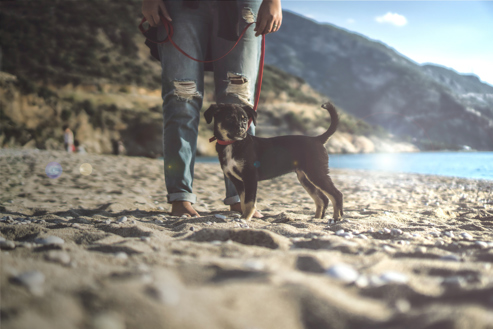
Slip lead
Commonly used for training purposes, the slip lead can be suitable if your dog is still having obedience problems when walking.
Similar to the slip collar, the lead loops through itself and over the dog’s head. So, if the dog pulls, they can be easily corrected by a quick pull sideways from you.
As with the slip collar, however, injury can be caused to your dog if used inappropriately.
Even when wearing a slip lead, your dog still needs to wear a collar with identification tag. This lead is unsuitable for breeds like greyhounds and whippets whose heads are thinner than their necks.
As ever, contact your vet if your pet seems in a lot of pain or distress, or if you have any other concerns. Dog insurance from Purely Pets could help you pay vets’ fees.
Tips for teaching your dog to walk on a lead
Training a dog to walk on a lead by your side is a great way to ensure walks are safe and enjoyable for you both.
A dog that’s constantly pulling on the lead is not going to be relaxing to walk with and could end up hurting itself.
Follow the five training steps below and your dog will soon be walking obediently by your side.
-
Choose the right equipment – ideally walk your dog with equipment that is comfortable for them and will not hurt them if they pull. A flat harness or collar is ideal for this. Retractable leads or slip leads and collars are not appropriate for this training.
-
Stop walking if the lead tightens – the key is to teach your dog to walk next to you. They need to understand that if they don’t pull and the lead is loose they get to move forwards but if they pull and it tightens they don’t. So, as soon as the lead tightens stop walking and wait for the lead to go loose. Don’t jerk the lead or tell them off, simply stand and wait for their attention to return to you.
-
Reward loose lead walking – keep some treats handy to reward them for walking with a loose lead. You might get through quite a few at the start but it’ll be worth it in the long run!
-
Go somewhere quiet – learning to walk with a loose lead will require your dog to focus on you. You don’t want them distracted by noises or other animals or they’ll never learn.
-
Be consistent – the most important thing with any training is being consistent. Each time you both go for a walk, you need to reinforce the training. If other members of the family or a dog walker takes them out, then they also need to use the same technique.

Get a quote for dog insurance from Purely Pets today
At Purely Pets, we love all our four-legged friends and the adventures we have with them while out and about.
However, whether exploring a new forest walk or having a sniff around their usual park route, sometimes the unexpected can happen.
Whether an injury or an illness vet’s bills can get expensive and finding the cash at a moment’s notice can be very stressful. Having insurance cover in place is a great way to protect yourself from this happening.
Like their proud owners, all dogs are different and we’ve designed 15 levels of lifetime cover to take that into account.
With dog insurance from Purely Pets you can choose cover for vets’ fees ranging from £1,000 to £15,000.
Finding a policy that will suit your budget and requirements couldn’t be simpler. As well as our award-winning policies, you can access our 24-Hour Vet Helpline and an online policy management portal.
Get a quote for dog insurance from Purely Pets today.
Policy benefits, features and discounts offered may very between insurance schemes or cover selected and are subject to underwriting criteria. Information contained within this article is accurate at the time of publishing but may be subject to change.
Helpful Pages
Recent Posts

Why do Pugs lick the air?
02/10/24Pet Insurance Quote
- 98% claims paid *
- Claims paid directly to vets
- 24/7 vet video consultations
- Interest free monthly payments


